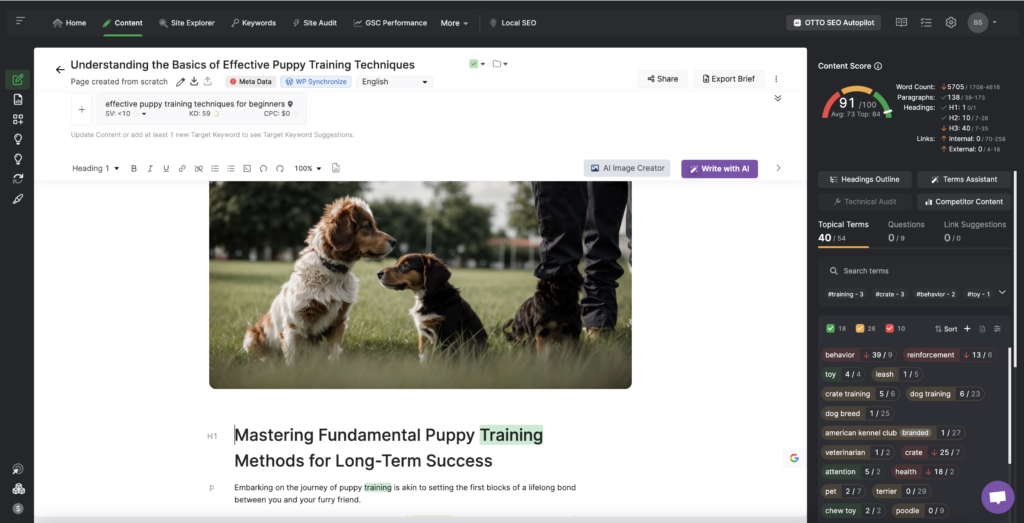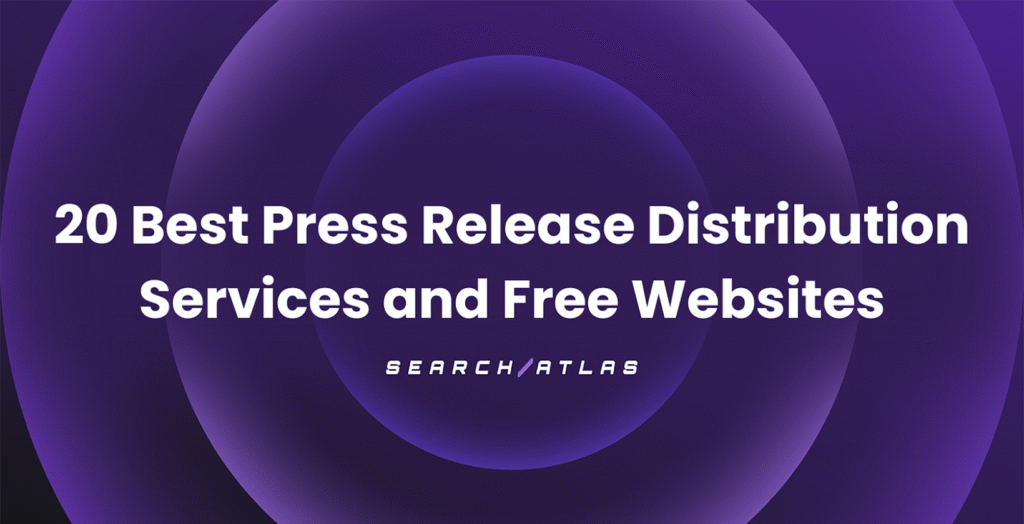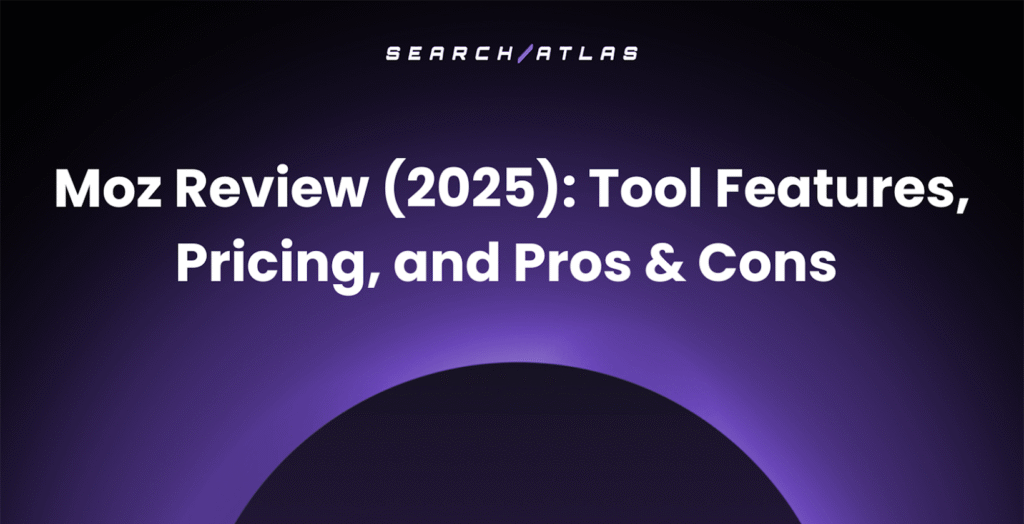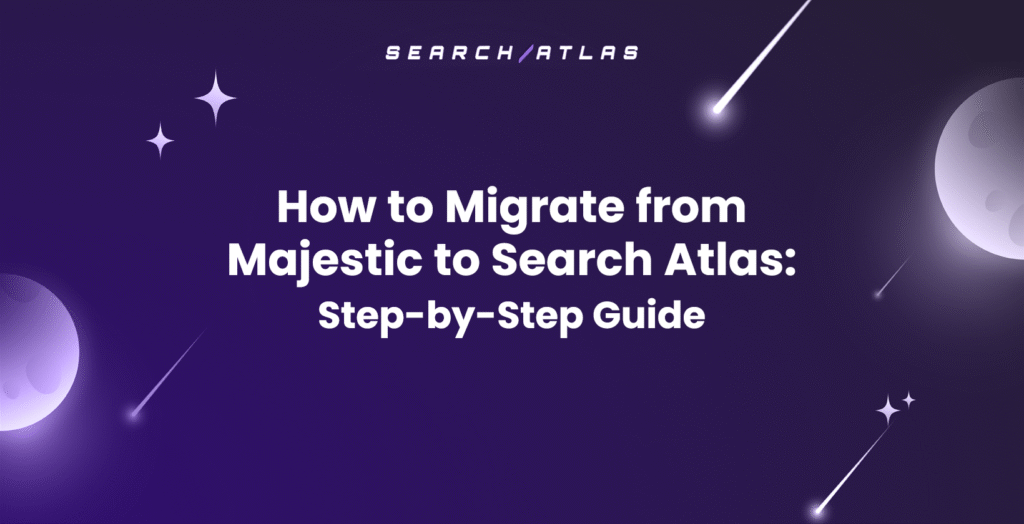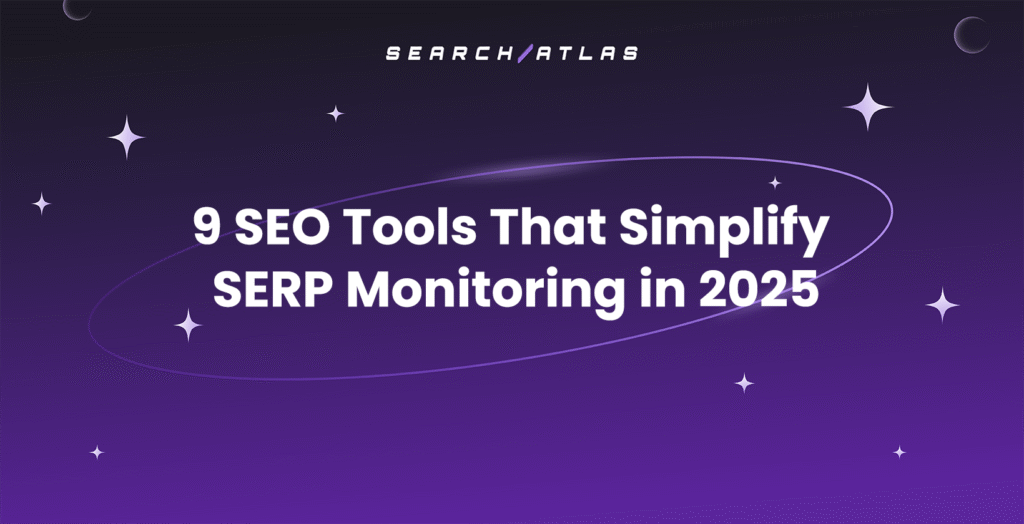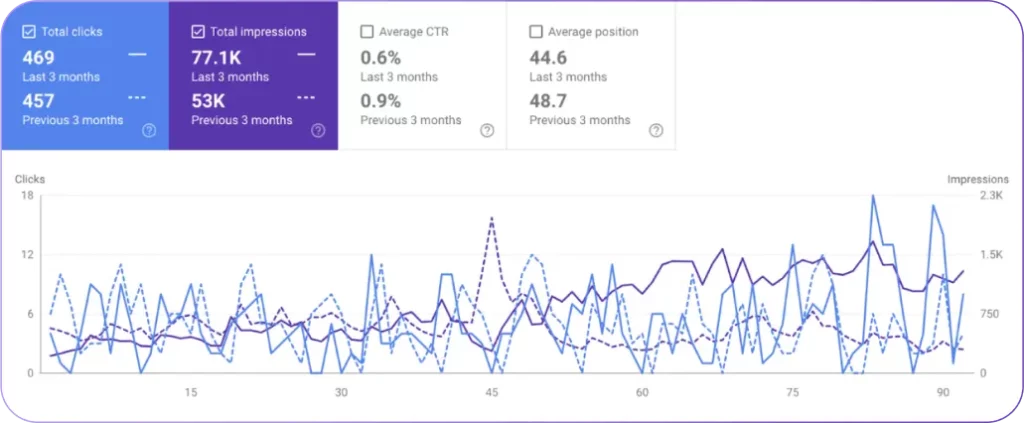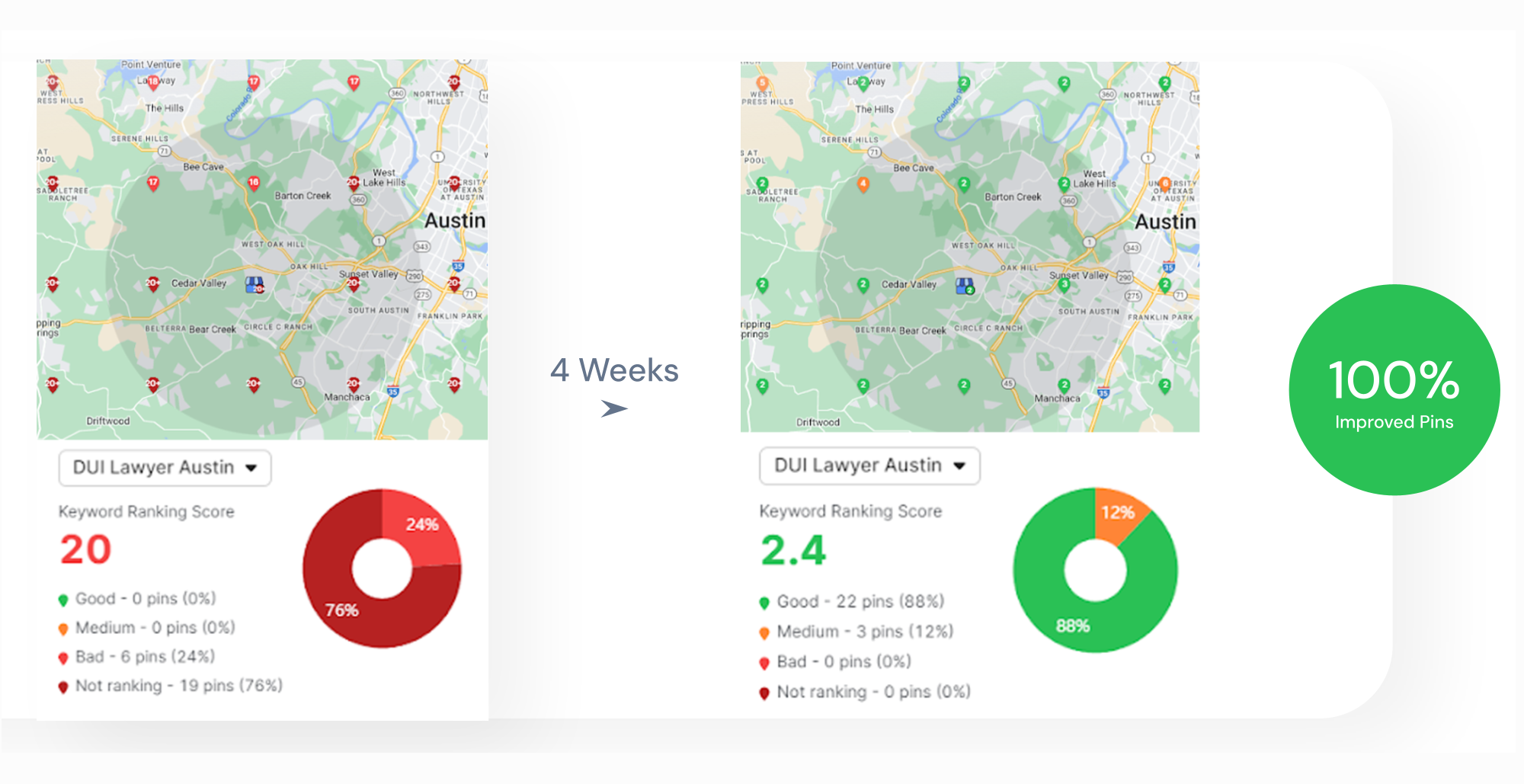International SEO is the process of optimizing a website to rank in search engines across multiple countries and languages. The key benefits of implementing an international SEO strategy include brand reach, local visibility, and user experience.
Global businesses must develop a well-structured strategy to succeed in international SEO. An international SEO strategy includes identifying the target market, doing thorough market research, developing a content strategy, and leveraging local search. Businesses should follow international SEO best practices to reach international audiences and improve their global search rankings. These international SEO best practices include choosing the right URL structure, building authoritative links, and building responsive websites.
What is International SEO?
International SEO is the process of optimizing your website to rank in search engine results pages (SERPs) across multiple countries and languages. International SEO aims to improve your website’s visibility, organic traffic, and overall performance by making sure that your online content effectively reaches and resonates with users from different countries and linguistic backgrounds.
The main objective of international SEO is to help search engines deliver the most relevant content to users based on their language and geographic location. For example, when a user in Germany searches for “smartphone,” they should receive results optimized for German, featuring local pricing, retailers, and region-specific mobile phone models. International SEO marketing exceeds simple translation and involves content localization that considers cultural context, regional preferences, and local search behaviors.
Global SEO helps businesses reach and engage audiences in multiple global markets by catering to different linguistic and regional preferences. Research on international SEO shows that 76% of consumers prefer purchasing from sites in their native language, which underscores the impact of worldwide SEO on engagement and conversions.
What is International Website Optimization in the Overall SEO Strategy?
International website optimization is one of the main aspects of the overall SEO strategy for global businesses, helping their website serve audiences across international markets. International website optimization involves using elements like hreflang tags, geo-targeting, localized content, and culturally relevant keyword strategies to increase visibility and reach in different regions.
While regular website SEO focuses on optimizing a website for a single market or language, international SEO follows the same principles but for a more global audience. SEO for international markets addresses linguistic, cultural, and technical variations in user behavior, search preferences, and technological infrastructure.
Multilingual SEO is a key element in international website optimization as it involves creating content in different languages, using regionally appropriate keywords, and making sure the website structure is optimized to support multiple languages without negatively impacting performance. The effectiveness of SEO for international markets depends on its ability to create a seamless, culturally sensitive, and technically optimized digital presence that resonates with international audiences.
What are the Benefits of International SEO?
There are six main benefits of international SEO for businesses seeking to expand into global markets. The benefits of international SEO are listed below.
- Increased Global Reach. International SEO expands a website’s visibility across different countries, helping businesses tap into new markets and attract diverse audiences.
- Improved Local Visibility. International SEO strategies help improve rankings on country-specific search engines like Baidu in China, Yandex in Russia, and Google across multiple regions, increasing visibility in underserved markets.
- Enhanced User Experience. International SEO tailors websites to linguistic nuances, cultural preferences, and regional communication styles, creating more personalized, engaging user experiences.
- Increased Conversion Rates. International search engine optimization enables businesses to create precisely targeted content that speaks directly to local consumer psychology, removing linguistic barriers that might prevent conversion.
- Strengthened Brand Authority and Trust. Global SEO marketing builds long-term brand trust and helps companies gain a competitive advantage, as customers increasingly value brands that show cultural intelligence and commitment to meaningful global communication.
- Increased Return on Investment (ROI) on Marketing Efforts. International SEO increases ROI by driving organic traffic from multiple regions, reducing reliance on paid ads, and securing long-term visibility in global markets.
How to Develop an International (Global) SEO Strategy?
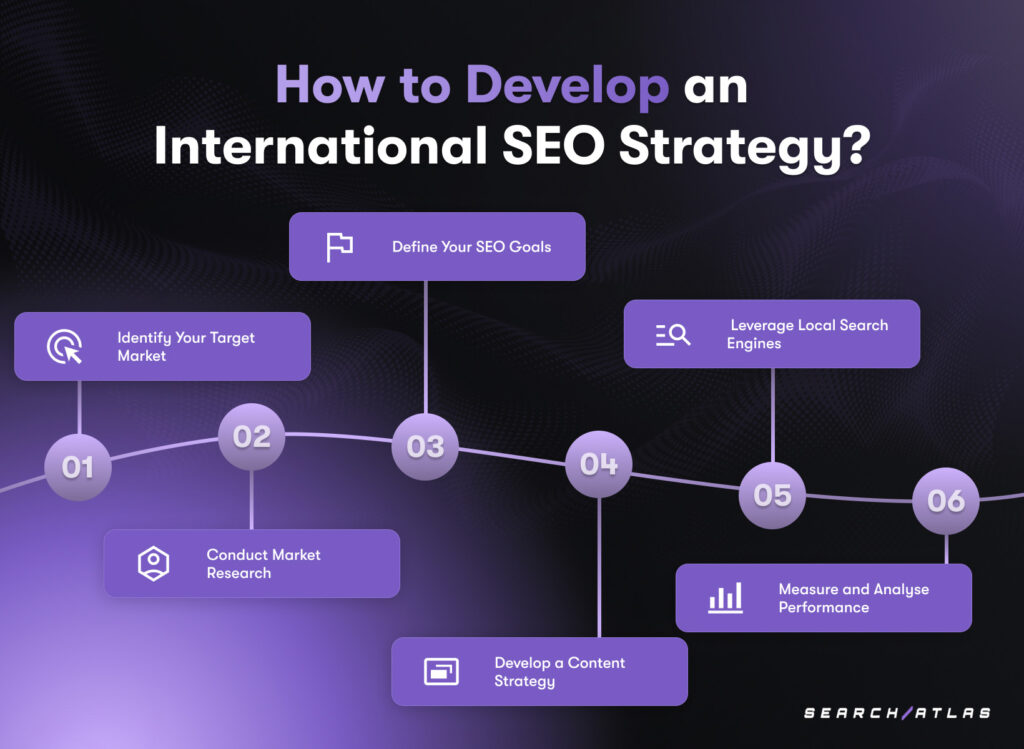
There are six main steps to developing an international (global) SEO strategy that helps rank your website in multiple countries and languages. These are listed below.
- Identify your target market. Identifying your target market is the first step to creating a global SEO strategy. Use tools like Google Analytics, Google Search Console, or Search Atlas SEO Software Platform to evaluate where your current international traffic is coming from and, based on this data, select markets that have demand for your products or services.
- Conduct market research. After identifying your target markets, conduct in-depth market research to understand the demand, competition, cultural differences, and local search behavior. Analyze language variations and content preferences to create relevant, localized content.
- Define your SEO goals. Clearly define the goals of your international SEO plan to make sure it aligns with your business objectives. Set SMART goals for each market, keeping in mind that SEO goals in Germany may differ from those in Japan due to varying levels of competition and market maturity.
- Develop a content strategy. Create a content strategy that includes high-quality content in your target languages and is optimized for local search intent. Translate and adapt content to suit the local audience’s cultural preferences, values, and needs.
- Leverage local search engines. Leveraging local search engines is crucial to reaching international audiences, as some regions rely on alternative search engines like Baidu, Yandex, and Naver. Tailor your SEO strategy to these platforms using region-specific keywords and obtain local backlinks to improve rankings.
- Measure and analyze performance. Use tools like Search Atlas SEO Software Platform, Google Analytics, and Google Search Console to monitor the traffic, rankings, and conversions by country or region and refine your strategy based on the insights.
What are the International SEO Challenges?
International SEO comes with a unique set of challenges that you must navigate to achieve visibility and relevance in multiple markets. The main challenges of international SEO are given below.
- Multilingual Websites. Managing a multilingual website poses a significant challenge in international SEO. Multilingual SEO involves culturally adapting the content to meet local search intent and optimizing for region-specific keywords to engage users in different regions.
- Multi-Regional Websites. Managing SEO for different regions or countries can become complex as businesses must carefully consider the correct URL structure, geo-targeting, and address regional nuances like currency, units of measurement, and local search trends. A well-executed multi-regional SEO impacts search engine optimization as well as user perception and trust.
- Duplicate Content. Duplicate or near-identical content across regional versions of a website can confuse search engines, making it difficult to determine which version to index or rank for a specific audience. Adequate strategies, such as using hreflang and canonical tags, are necessary to signal the right versions to search engines.
- Keyword Cannibalization. Keyword cannibalization happens when multiple pages target the same keyword in different regions or languages, eventually ending up competing against each other in search engine rankings. SEO professionals must develop intricate mapping strategies to make sure that each page targets distinct keyword clusters, preventing keyword cannibalization and maximizing overall search visibility.
- Indexation Issues. Indexation problems can occur when search engines fail to crawl and index all the localized versions of your website due to issues like incorrect robots.txt settings, blocking local versions of pages, or improperly implemented hreflang tags. Proper technical setup of sitemaps and server configurations makes sure all versions are indexed correctly.
- Parent-Child Relationships. Multilingual websites are managed by content management systems (CMS) using a parent-child structure, where language versions of pages are linked hierarchically. Parent-child website relationships can lead to issues if updates on the parent site override localized content. Choosing the right CMS setup and technical configurations is vital for smooth content management and SEO performance.
What are the International SEO Best Practices to Reach Global Audiences?
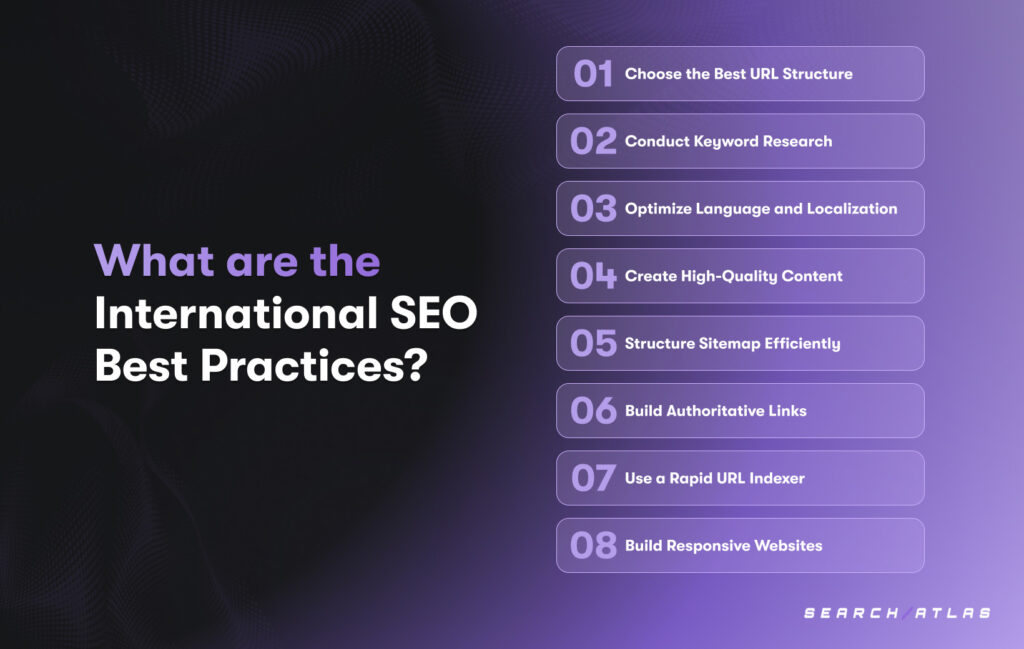
There are eight main international SEO best practices to reach global audiences. These eight main international SEO tips include choosing the right URL structure, conducting keyword research, optimizing language and localization, creating high-quality content, structuring sitemap efficiently, building authoritative links, using a rapid URL indexer, and building responsive websites.
1. Choose the Best URL Structure
Choosing the best URL structure is a necessary step for international SEO, as it helps search engines understand which country or language your content is targeting. A well-structured URL supports better search engine rankings by clearly signaling geographic or language targeting, improves user experience by directing visitors to the correct version of the site, and prevents duplicate content issues, especially when there are multiple language versions.
The right URL structure boosts domain authority by centralizing all SEO efforts under one domain and simplifies website management.
The practices for choosing the best URL structures are listed below.
- Select the most suitable URL structure for your business, like country-code top-level domains (ccTLDs), subdirectories, or subdomains.
- Implement hreflang tags, regardless of the URL structure, to help search engines serve the correct language and regional versions of your site.
- Make sure to follow a single URL structure to avoid confusion and SEP inefficiencies.
- Optimize for local search engines if you are targeting regions where Google is not dominant.
- Keep URLs short and readable, avoiding unnecessary parameters and complex structures.
The right URL structure for international SEO depends on business goals, budget, and the level of SEO resources available. ccTLDs are the best choice for building strong brand trust and local authority, while subdirectories offer the most SEO efficiency and centralized management. Subdomains may be a suitable option for businesses needing more technical flexibility.
2. Conduct Keyword Research
Conducting keyword research is an essential component of international SEO, as keyword intent and search behavior vary across regions. Conducting keyword research involves identifying the most relevant and high-traffic search terms in different languages and regions to make sure your content aligns with local search behaviors and user intent.
Effective keyword research helps you attract a relevant audience, increasing the chances of converting them into leads, and it allows you to create content that speaks directly to the cultural preferences and needs of each market.
To conduct keyword research for international SEO, implement the best practices listed below.
- Use tools like the Search Atlas Keyword Magic Tool to find keywords specific to each country or region.
- Analyze how local competitors rank for certain keywords with the Search Atlas Keyword Gap Tool to identify gaps and opportunities in your keyword strategy.
- Prioritize keywords with high search volume in the target region, even if they have lower global search volume.
- Consider dialects, synonyms, and region-specific slang to make sure your keywords reflect local language preferences.
- Use long-tail keywords specific to each market to capture more targeted traffic and improve chances of ranking higher.
- Keep an eye on regional search trends and seasonality to adjust keywords for timely relevance.
The Search Atlas Keyword Magic Tool helps simplify the keyword research process by providing comprehensive insights into key metrics such as search volume, cost-per-click (CPC), keyword difficulty, top-ranking web pages, and related keyword suggestions. The Search Atlas Keyword Magic Tool helps you discover keyword variations, related keywords, and questions to refine your SEO strategy.

Additionally, the Search Atlas Keyword Magic Tool allows you to create keyword lists and add them to the rank tracker for ongoing monitoring.

3. Optimize Language and Localization
Optimizing language and localization is an important aspect of international SEO and refers to the process of adapting website content to different languages, cultures, and regional preferences. Optimizing language and localization goes beyond simple translation and involves tailoring content, images, currency, date formats, and even tone of voice to match local expectations.
Language and localization strategies ensure that content resonates with target audiences and meets their search behavior, improving user engagement and conversions. The strategies help build trust and credibility, make it easier for users to navigate and take action, and assist businesses in connecting with diverse markets to strengthen their brand identity.
The best practices for optimizing language and localization are outlined below.
- Conduct in-depth local keyword research to understand regional search behaviors and linguistic preferences.
- Invest in professional native-speaking translators who understand both the linguistic nuances and industry-specific terminologies.
- Adapt content past literal translation to respect and resonate with local cultural contexts and communication styles.
- Create an intuitive language selection mechanism that automatically detects user location while allowing manual language choice.
- Develop unique, locally tailored content that addresses specific market needs. Don’t just translate existing materials.
Optimizing language and localization as part of an international SEO strategy makes it unambiguously clear to users that your page is for them and helps create an experience that feels native to each target audience.
4. Create High-Quality Content
Creating high-quality content in international SEO refers to developing engaging, relevant, and informative material tailored to the needs of your international audience. Creating high-quality content should address the search intent of users in different regions and be optimized for local preferences, languages, and cultural nuances.
High-quality content is indispensable for ranking well in search engines and providing value to users across various markets. It drives higher engagement rates, reduces bounce rates, and encourages users to explore your website further. Additionally, high-quality content builds trust and credibility by resonating with a specific regional audience and improves brand perception.
To create high-quality content, follow the tips below.
- Use local examples, references, statistics, and case studies to make the content more relatable to the target audience.
- Structure content in a way that it answers common questions directly, improving the chances of appearing in featured snippets or other Rich Results.
- Use simple, clear language that is easy to read and understand, adjusting for regional variations in vocabulary and sentence structure.
- Include images, videos, and infographics that are culturally appropriate and resonate with the target audience.
- Keep content fresh and relevant by regularly reviewing and updating it to reflect current trends and local market changes.
The key to developing high-quality content as part of an international SEO strategy is to strike a healthy balance between global brand consistency and local market relevance. While maintaining a unified brand voice helps establish credibility and recognition across different regions, content should be tailored to resonate with local audiences to build meaningful connections and strengthen your brand’s authority.
5. Structure Sitemap Efficiently
Structuring a sitemap efficiently means organizing and optimizing a website’s XML sitemap to help search engines easily discover, crawl, and index content for different languages and regions. Structuring a sitemap for international SEO guarantees that search engines understand the relationships between different versions of a website, including country-specific domains, subdirectories, or subdomains.
Effective sitemap structuring helps prioritize important pages and makes sure that localized content is properly recognized and ranked in relevant markets.
To structure a sitemap for your international website, follow the best practices listed below.
- Add hreflang tags in the XML sitemap to guide search engines on which language and regional versions to show.
- Create individual sitemaps if your site has multiple regions or languages to improve crawl efficiency.
- Submit the sitemap to Google Search Console and Bing Webmaster Tools to help search engines find and index international pages.
- Implement canonical tags to avoid duplicate content issues between international versions of similar pages.
- Ensure key pages in each language version are included in the sitemap and not blocked by robots.txt.
- Keep the sitemap updated with new or modified content to make sure search engines always have the latest structure.
- Check for broken links, incorrect hreflang annotations, and crawl issues using SEO tools like Google Search Console and Search Atlas SEO Software Platform.
The Search Atlas Site Auditor Tool provides a Crawl Monitoring feature to help you structure a sitemap efficiently by providing real-time tracking and analysis of how search engines and AI bots interact with your website.

The Search Atlas Site Auditor Tool’s Crawl Monitoring feature monitors crawler behavior, distribution, and patterns across your website, allowing you to make proactive adjustments to guide crawlers more effectively. Search Atlas Site Auditor Tool’s Crawl Monitoring feature improves how your content is indexed, as well as boosts your website’s overall search visibility and crawl budget efficiency.

6. Build Authoritative Links
Building authoritative links is a vital component of international SEO and involves acquiring high-quality backlinks from reputable, region-specific websites to improve a site’s credibility, search rankings, and organic visibility across different markets.
Building authoritative links signals to search engines that your content is trustworthy and relevant to international audiences, improving engagement and conversion rates. Strong backlinks from reputable local sites improve a website’s domain authority and reinforce SEO localization efforts.
The tips for building authoritative links are below.
- Earn backlinks from region-specific, high-authority websites to strengthen local SEO presence.
- Partner with industry influencers and local bloggers to gain high-quality, location-relevant backlinks.
- Submit business listings to regional directories to establish credibility in local search results.
- Use guest posting on trusted websites in different markets to gain exposure and high-quality backlinks. Use professional platforms like Link Laboratory to ensure the highest quality of links without the struggle of manually finding websites.
- Engage in digital PR with tools like Signal Genesys and collaborate with local media outlets for authoritative mentions and links.
- Encourage backlinks from satisfied customers and brand advocates by featuring testimonials and user-generated content.
- Use multilingual anchor texts appropriately to optimize backlink relevance for different language markets.
- Monitor and analyze backlink profiles regularly to remove low-quality or spammy links that may harm SEO performance.
The Search Atlas SEO Software Platform provides a Backlink Research Tool to help you identify valuable link-building opportunities by providing domain and page-level insights for any website, URL, or subdomain.

The Search Atlas Backlink Research Tool offers comprehensive insights by generating detailed backlink metrics, historical link-building trends, and in-depth anchor text analysis. Search Atlas Backlink Research Tool helps you discover high-quality linking opportunities, track competitor strategies, and improve your website’s authority in global markets.
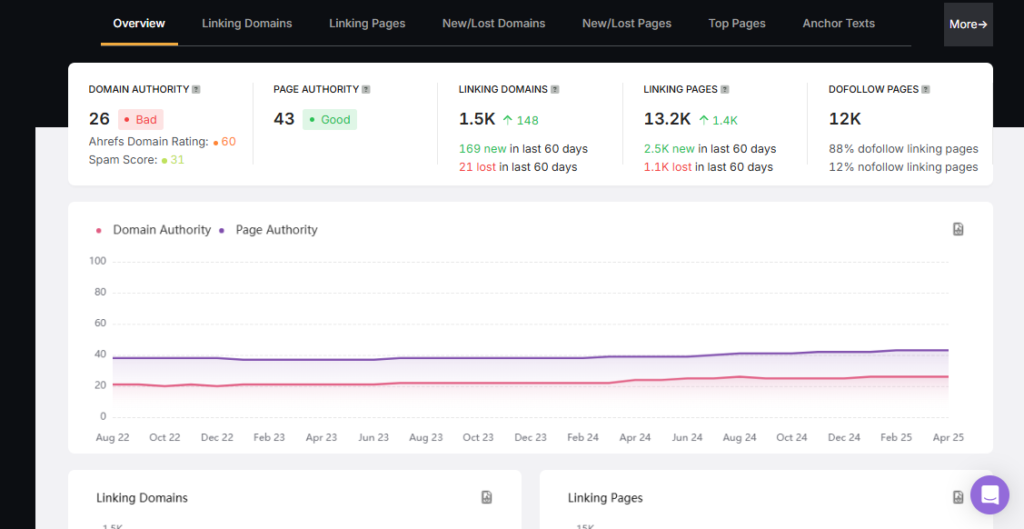
7. Use a Rapid URL Indexer
Using a rapid URL indexer can significantly boost international SEO efforts. Using a rapid URL indexer can help you quickly submit and index new or updated web pages in search engines like Google and Bing, helping you gain an edge by getting content indexed before your competitors.
Rapid URL indexers accelerate the crawling and ranking process, making sure that international content appears in search results as soon as possible. Rapid URL indexing tools prevent international pages from being overlooked or taking too long to appear in search results, and make sure that search engines quickly recognize regional and language-specific pages.
The tips for using a rapid URL indexer are outlined below.
- Submit new pages directly to Google Search Console for faster indexing.
- Use Bing Webmaster Tools to make sure your content is indexed on Bing and other Microsoft search engines.
- Implement an XML sitemap with frequent updates to help search engines discover new and modified pages faster.
- Leverage API-based indexing tools to automate and speed up URL submissions.
- Use structured data (schema markup) to make it easier for search engines to understand and index content.
- Avoid submitting low-quality or duplicate pages to prevent indexing issues.
- Monitor indexing status regularly to identify and fix any delays or errors in search engine crawlers.
The Search Atlas OTTO SEO Tool features GSC instant indexing, which integrates with Google Search Console to quickly index your web pages and make sure your latest updates are instantly visible to search engines. Search Atlas OTTO SEO Tool’s GSC instant indexing crawler runs 24/7 to have your site indexed and provides two indexing options to cater to different website needs.

With these powerful indexing solutions, OTTO SEO helps your content reach the right audience more quickly.
8. Build Responsive Websites
Building a responsive website is imperative for international SEO, as it makes sure that your site offers a seamless experience across all devices and screen sizes. Building responsive websites involves adjusting your website design, layout, and navigation to the user’s device, screen size, and resolution while maintaining readability, usability, and navigation consistency.
Responsive websites keep users engaged and prevent them from leaving due to poor navigation or slow load times. Responsive web design improves website traffic as Google prioritizes mobile-first indexing or mobile-friendly sites.
To build a responsive website, follow the best practices listed below.
- Use a mobile-first design approach to guarantee that your site performs well on all devices.
- Implement flexible grid layouts and scalable images to adapt to different screen sizes.
- Optimize page speed with compressed images, lazy loading, and fast hosting for better performance.
- Use appropriate font sizes and spacing to keep text easily readable without the need for zooming.
- Test responsiveness across different devices and browsers to guarantee a consistent experience.
- Use structured data to help search engines understand your content better.
- Avoid intrusive pop-ups or elements that disrupt the user experience on mobile devices.
As international markets differ in their device preferences and internet speed, investing in responsive web design helps attract and retain international visitors and strengthens brand credibility by providing a professional and user-friendly experience.
What are the Technical SEO Considerations for International SEO?
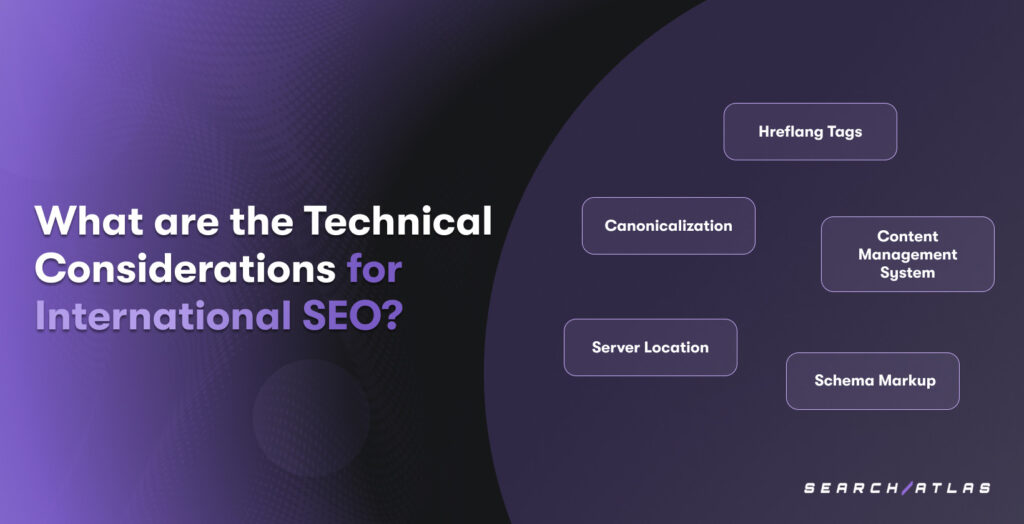
Technical SEO considerations for international SEO ensure your content is correctly indexed, displayed in the right language, and targeted to the correct geographical audience. The main technical SEO considerations for international websites are listed below.
- Hreflang Tags. Use hreflang tags to help search engines identify and serve the correct language and regional versions of your webpage to users. Hreflang tags prevent duplicate content issues by making sure that search engines do not mistakenly consider multiple language versions as identical content.
- Canonicalization. Use canonical tags to prevent duplicate content issues when multiple international versions of a webpage exist. Canonical URLs help search engines understand which page should be indexed and ranked, and are especially useful when regional versions of a page contain similar or identical content with only minor localization changes.
- Server Location. Host your website on a server closer to your target audience to improve latency, load time, and performance. Server location is not a significant ranking factor, but it still affects page speed and user experience. Some businesses prefer using content delivery networks (CDNs) to deliver content in multiple global locations.
- Schema Markup. Implement structured data (schema markup) to help search engines understand and present your content in search results better. Using schema markup can define business locations, events, products, reviews, and local services, improving search visibility for regional markets, and is an essential component of international technical SEO.
- CMS. Use a CMS that supports multilingual and multi-regional SEO to make it easier for you to manage and optimize content across different languages and countries. Some CMS platforms have built-in hreflang support, localization features, and flexible URL structuring, which can help you streamline international SEO efforts.
How Important is Content Localization in International SEO?
Content localization is a crucial aspect of international SEO because it helps your website’s messaging connect with audiences across different regions. Content localization focuses on adapting content to cultural nuances, regional dialects, currencies, date formats, and local search behaviors. Ensuing SEO localization makes the content feel native to a specific audience, making users more likely to trust the brand, engage with the website, and convert into customers.
Localized content, from an SEO perspective, improves search visibility and rankings in regional markets. Search engines prioritize content that aligns with user intent, and localized keywords, phrases, and topics help a website rank better for country-specific searches. For example, a term commonly searched in the U.S. may not have the same relevance in the U.K. or Australia, making it essential to conduct region-specific keyword research.
Localization enhances user experience (UX) by making the content feel authentic and relevant. Users are more likely to leave if they struggle to understand a website’s content due to unfamiliar language, references, or formatting, increasing bounce rates and reducing dwell time. A localized experience keeps visitors engaged, fosters brand loyalty, and improves overall conversion rates.
There are many factors that make content relevant and effective in different markets. These include incorporating region-specific keywords, considering cultural nuances, adapting tone and style, using localized references, applying proper formatting (currency, date, and measurement units), and complying with local regulations. Aligning your content with these elements improves the user experience, builds trust, and improves search visibility in international markets.
What are the Common International SEO Mistakes?
International SEO can be challenging, and even seasoned marketers can sometimes fall into common pitfalls that hurt rankings, visibility, or user experience.
The common international SEO mistakes businesses make while expanding into global markets are listed below.
- Implementing hreflang incorrectly. Misusing or neglecting hreflang tags can confuse search engines about language and regional targeting, leading to wrong pages appearing in search results.
- Ignoring local keyword research. Failing to research and optimize for region-specific keywords can limit search visibility, as keywords that work in one market may not be relevant in another.
- Not adapting content for cultural differences. Simply translating content without considering local customs, tone, and user behavior can make it feel disconnected or unappealing to the target audience.
- Using duplicate content across regional pages. Using identical content across multiple country versions without proper canonicalization can lead to duplicate content issues, diluting SEO value.
- Ignoring local backlink strategies. Not building high-quality, region-specific backlinks can hinder a site’s authority and visibility in local search results.
- Overlooking mobile optimization. Many global users access content primarily on mobile devices, so failing to consider a responsive design can negatively impact user experience and rankings.
How to Perform an International SEO Audit?
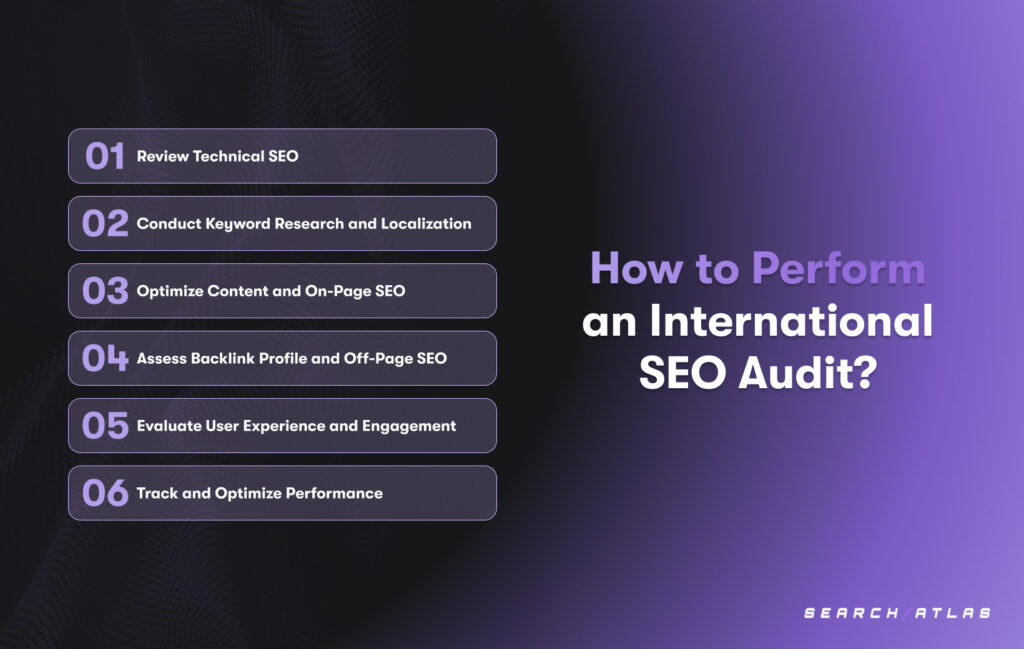
There are six essential steps to performing an international SEO audit that help confirm a website is properly optimized for multiple countries and languages. These six steps are listed below.
- Review technical SEO. Start by checking the hreflang implementation to make sure the correct content is served to users in different regions. Evaluate the site structure, deciding whether to use ccTLDs, subdirectories, or subdomains, as this affects search rankings. Additionally, make sure the website is mobile-friendly, fast-loading, and properly indexed for each target market.
- Conduct keyword research and localization. Identify region-specific keywords instead of directly translating existing ones, as search trends vary across countries, and understanding local search behavior is crucial. Analyze local competitors to gain insights into which keywords and content strategies work best in each region.
- Optimize content and on-page SEO. Make sure the content is not just translated but adapted to each culture to resonate with local audiences. Optimize meta titles, descriptions, headers, and alt text for each target country. Additionally, check for duplicate content issues that may arise when serving similar content in different languages.
- Assess the backlink profile and off-page SEO. Assess the website’s backlink profile and focus on acquiring high-quality, region-specific backlinks. Building relationships with local influencers, media outlets, and directories can help improve authority in different markets. Additionally, monitor for spammy or low-quality links that may harm rankings.
- Evaluate user experience and engagement. Evaluate how users from different regions interact with the website. Check for localized contact details, customer support options, and payment methods to improve user trust. Additionally, confirm that the website complies with local privacy regulations, such as GDPR for Europe or CCPA for California.
- Track and optimize performance. Set up Google Search Console, Google Analytics, or Search Atlas SEO Software Platform to track organic traffic, rankings, and conversions for each target market. Continuously monitor performance data, present these insights in an international SEO performance report, and refine the SEO strategy based on insights to improve international search visibility.
What Tools Can Help with International SEO?
Businesses can use a combination of free tools from Google and paid solutions like Search Atlas SEO Software Platform to help them with keyword research, technical SEO, and performance tracking to ensure their content ranks well in different regions.
Google offers free tools like Keyword Planner for finding region-specific keywords, Google Trends for tracking global search trends, and Search Console for managing hreflang tags and indexation. Google Analytics helps track website performance across markets by providing insights into traffic, engagement, and conversions.
While Google’s free tools offer valuable insights, paid tools like Search Atlas SEO Software Platform provide advanced SEO automation, deeper keyword analysis, and competitive intelligence tailored for international markets. Search Atlas’s Keyword Magic Tool includes competitor pressure scores, which help businesses understand the competitive pressure from other sites targeting the same keyword. Additionally, its SERP analysis feature allows businesses to see which competitors are ranking for specific search terms in each region, helping them refine their strategy for better visibility.
Search Atlas’s OTTO SEO Tool helps you automate SEO best practices across your website and detect technical issues such as hreflang errors, duplicate content, and slow-loading pages, which can affect rankings in international markets. Search Atlas’s OTTO SEO tool helps you acquire high-quality, country-specific backlinks that strengthen your domain authority in different locations. Additionally, Search Atlas SEO tools excel in global SEO analytics and offer you detailed insights into organic and paid traffic, keyword rankings, backlink profiles, and more to help you track your website’s performance.
Are There Specific SEO Tools for International SEO Tracking?
Yes, there are specific SEO tools for international SEO tracking. Search Atlas SEO Software Platform provides comprehensive tools for global keyword tracking, analyzing competitor performance in different countries, and identifying technical SEO issues related to canonical links, crawling, and indexing to help businesses optimize their websites for multiple regions and languages.
What Are the Key Metrics to Track in International SEO?
Tracking the right metrics in international SEO helps you understand how well your localized content performs across different regions and languages.
The key metrics you should monitor are listed below.
- Organic Traffic. Tracking organic traffic by country and language helps measure the effectiveness of your international SEO strategy. Analyzing website visitors from different regions helps you identify which markets are driving the most traffic and where improvements are needed.
- Keyword Rankings. Monitoring how your targeted keywords perform in different markets is crucial, as keyword rankings vary by country. Content with low-ranking keywords may need to be optimized, meta descriptions adjusted, or the keyword strategy refined to align with local search intent.
- Backlinks. The number and quality of backlinks from country-specific domains influence a website’s authority and rankings in regional search results. Earning backlinks from reputable local sources can improve visibility and credibility in international markets.
- Conversion Rates. Tracking conversion rates across different regions helps measure how well a website resonates with its international audience. A low conversion rate in certain countries may indicate the need for better localization, improved calls to action, or adjustments to the user journey.
- Branded vs. Non-Branded Traffic. Differentiating between branded and non-branded traffic helps evaluate brand awareness in international markets. A high volume of branded searches suggests strong brand recognition, while a rise in non-branded traffic indicates success in capturing new audiences through SEO efforts.
- Click-Through Rate (CTR). CTR measures how often users in different regions click on search results. A low CTR may suggest that page titles, meta descriptions, or URLs are not compelling enough for local audiences, requiring optimization for better engagement.
- Return on Investment. Analyzing ROI for international SEO efforts helps determine whether the time and resources invested in a particular market are yielding profitable results. Comparing the cost of SEO initiatives with revenue generated from different regions can help businesses strategically allocate their efforts for maximum impact.
- Core Web Vitals. Technical performance metrics, including page loading speed, interactivity, and visual stability, impact search rankings and user experience globally. Meeting core web vitals performance standards across different regions improves overall usability and contributes to better rankings.
- User Experience (UX). UX metrics such as bounce rate, session duration, and pages per session provide insights into how well international audiences engage with a website. A poor user experience in a particular region may indicate the need for better content localization, navigation improvements, or mobile optimization.
- Crawlability and Indexability. Ensuring that search engines properly crawl and index a website’s localized pages is crucial for international SEO success. Issues such as incorrect hreflang tags, duplicate content, or poor internal linking can prevent content from appearing in the right regional search results.
What Businesses Need International SEO the Most?
All multilingual and multi-regional businesses benefit the most from international SEO, as it helps them expand their online presence, attract customers from different countries, and increase global conversions. The businesses that need international SEO the most are listed below.
- E-Commerce Businesses. Online retailers, like Shopify, that sell products globally need international SEO to optimize for different markets and attract customers searching in various languages and locations. International e-commerce SEO involves implementing region-specific keywords, currency localization, and international payment methods to improve visibility and sales.
- Manufacturers. Companies that produce and distribute goods across different countries need international SEO to connect with potential buyers, suppliers, and distributors. International SEO for manufacturing involves optimizing product pages and technical specifications in multiple languages to improve searchability.
- B2B Businesses. Businesses that offer products or services to other companies worldwide need international SEO to generate high-quality leads. International B2B SEO focuses on long-form content, whitepapers, multilingual case studies, industry reports, and optimizing for LinkedIn and business directories to drive organic international traffic and generate leads.
- Schools and Educational Institutions. Universities, language schools, and online education platforms targeting international students require multilingual SEO. This makes sure that their programs, courses, and admissions information reach prospective students in different countries.
- Hospitality and Travel Businesses. Hotels, airlines, travel agencies, and booking platforms depend on international traffic. International travel SEO involves optimizing for “near me” searches, implementing rich snippets for hotel ratings, and using multilingual blog content to capture high-intent travelers searching for accommodations and experiences.
- Software and SaaS Companies. Cloud-based software and SaaS providers need international SEO to optimize for different markets and attract international users. International SaaS SEO involves keyword localization, content marketing, product demo videos in multiple languages, and optimizing user documentation to improve organic search visibility.
- Media and Publishing Companies. News websites, blogs, and digital media platforms with a global audience need international SEO to rank well in different regions. Optimizing content for cultural relevance and local search intent helps increase readership.
- Healthcare and Medical Providers. Hospitals, telemedicine providers, and pharmaceutical companies serving international patients need international SEO to optimize their websites for local healthcare-related searches. Accurate translations, regulatory compliance, and a strong healthcare SEO strategy help improve credibility, visibility, and patient engagement across global markets.
- Real Estate Agencies. Companies selling or renting properties globally need international SEO to reach foreign investors and homebuyers. Real estate SEO includes using geo-targeted keywords, optimizing high-quality property images and videos, creating interactive property maps, and implementing structured data markup for real estate listings to improve visibility in local markets.
- Legal and Financial Services. Law firms, tax consultants, and financial advisors targeting international clients need international SEO to optimize their content for different jurisdictions. Tailored strategies, such as SEO for lawyers and financial professionals, focused on legal regulations and financial terminology in multiple languages, help attract the right audience and build trust across borders.
How to Build an International SEO Agency?
There are six essential steps to building a global SEO agency. These six essential steps are listed below.
- Define your niche and expertise. Identifying a specific niche helps your agency stand out within the competitive international SEO space. Specializing in areas such as e–commerce SEO, B2B SEO or enterprise SEO makes it easier to attract the right clients and build credibility.
- Offer comprehensive international SEO services. Offering a complete suite of international SEO services, including multilingual SEO, content localization, and geo-targeted link building, is vital for a successful international SEO company. Additionally, offering white-label SEO services to other agencies can be a valuable revenue stream, allowing your agency to scale by handling SEO for multiple partners while they manage client relationships.
- Build case studies to prove your expertise. Creating and publishing international SEO case studies helps establish credibility and attract potential clients. Demonstrating measurable improvements in organic traffic, keyword rankings, and conversions, along with before-and-after data, reinforces your agency’s success and builds trust.
- Develop a strong online presence. Your agency should implement the same SEO strategies you offer clients to build its reputation. Optimizing your website for international search, publishing thought leadership articles, and maintaining an active presence on social media and industry forums helps improve visibility and establishes your agency as a thought leader in international SEO services.
- Leverage strategic partnerships and networking. Forming partnerships with web development agencies, content localization firms, and digital marketing consultants can expand your service offerings and generate referrals.
- Automate and scale your operations. Automation and scalability become crucial as your agency grows. Investing in advanced SEO tools helps streamline international keyword research, technical audits, and competitor analysis. Hiring a skilled team of SEO specialists, content writers, and localization experts promotes smooth project management while maintaining high-quality services for international clients.
How to Become an International SEO Consultant?
Becoming an international SEO consultant requires a deep understanding of traditional SEO, technical SEO, semantic SEO, and market-specific strategies. Start by enrolling in SEO courses from platforms like Coursera, HubSpot, and Google Digital Garage, focusing on international SEO consulting services and advanced SEO techniques. Regularly follow expert blogs and resources such as Search Atlas publications and tutorials from Google Search Central to stay updated with algorithm changes and search engine patents that impact global rankings.
Attending global SEO conferences is essential for networking, gaining knowledge from top speakers, and staying ahead of industry trends.
Practical experience is crucial to becoming an international SEO consultant, so working on multilingual websites, implementing hreflang tags, and optimizing content for different regions will help build credibility. Establishing thought leadership by publishing case studies, speaking at webinars, and offering international SEO consulting services positions you as an authority in the field.
What to Know About Global (International) SEO Besides Semantic SEO?
Global (international) SEO refers to the process of optimizing a website so that it can be easily found and ranked by search engines in multiple countries and languages, while semantic SEO is the practice of optimizing content based on the meaning behind users’ search queries rather than relying solely on exact-match keywords.
Semantic SEO involves using related terms, entities, synonyms, and contextually relevant language to help search engines like Google better understand what your content is about and how it relates to a user’s search intent. This approach aligns with modern algorithms, which prioritize relevance and user experience over keyword density. Semantic SEO strategies include incorporating structured data, answering related questions, and creating topic clusters that improve visibility and make your content more discoverable in both local and international search results.
What to Know About Global (International) SEO Besides Geo Targeting SEO?
Global (international) SEO refers to the practice of optimizing a website for multiple regions and languages to improve visibility across different countries, while geo-targeting SEO is the practice of optimizing content to target users in specific geographic locations.
Geo-targeting SEO involves tailoring your content, keywords, and website structure to make sure it ranks higher in local search results. Geo-targeting strategies include using country-specific domains, hreflang tags for language targeting, and creating location-specific pages. Geo-targeting SEO helps improve visibility and relevance for regional audiences, driving more targeted traffic to your site.
While geo-targeting is a key element of global SEO, international SEO encompasses much more than just geo-targeting.
What is the Difference Between International (Global) SEO and Local SEO?
The difference between international (global) SEO and local SEO is that international SEO focuses on scaling globally, while local SEO prioritizes ranking in a specific city or region.
International (Global) SEO ensures a website ranks well across different countries by optimizing it for multiple regions and languages. It involves strategies like hreflang tags, ccTLDs, subdirectories, content localization, and multi-regional keyword optimization to make content relevant to diverse global audiences. For example, Nike’s website has different versions for various countries, each tailored to local languages, currencies, and cultural preferences.
Local SEO, on the other hand, targets a specific geographic area to help businesses rank in local search results. Local SEO focuses on Google My Business (GMB) optimization, local keywords, NAP (Name, Address, Phone Number) consistency, and customer reviews to attract nearby customers. A good example is a Nike store in New York, which would use an SEO localization strategy like optimizing for “Nike store near me” or “best sports shoes in NYC” to appear in local searches.
What is the Difference Between International (Global) SEO and National SEO?
The difference between international (global) SEO and national SEO is that international SEO targets multiple countries and languages, while national SEO prioritizes ranking well within a single country’s search landscape and building authority and visibility within a specific country.
International (Global) SEO refers to the practice of optimizing a website to rank effectively across multiple countries and languages. For example, Zara has different versions of its website for various countries, each offering localized content, pricing, and shipping options. The goal of International SEO is to expand visibility across multiple countries and languages, making sure that international users land on the most relevant version of a website.
National SEO, in contrast, targets a single country, helping businesses rank for competitive national search terms. National SEO focuses on broad keyword optimization, high-quality content, and authoritative backlinks to rank well across an entire country rather than specific local areas. For instance, Best Buy, a U.S.-based electronics retailer, optimizes its website to rank nationwide rather than targeting different countries or multiple languages.


